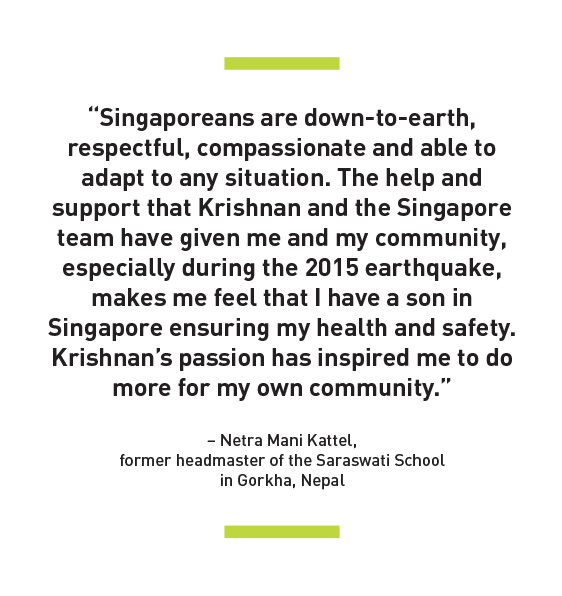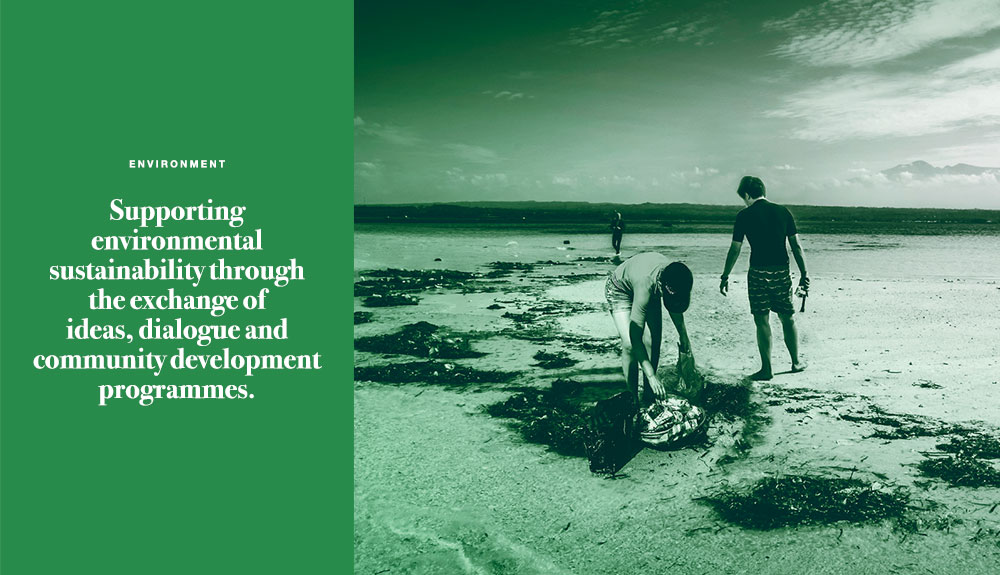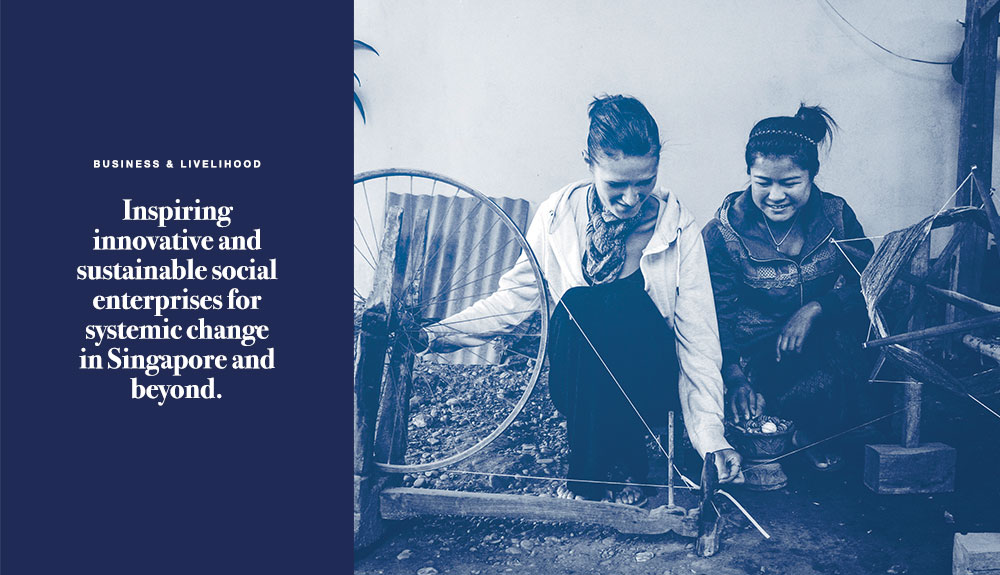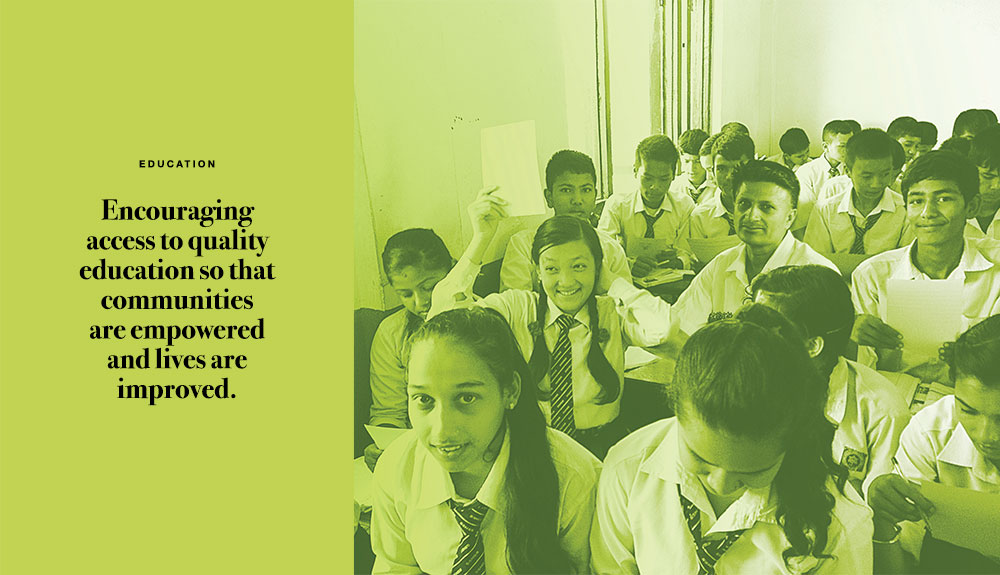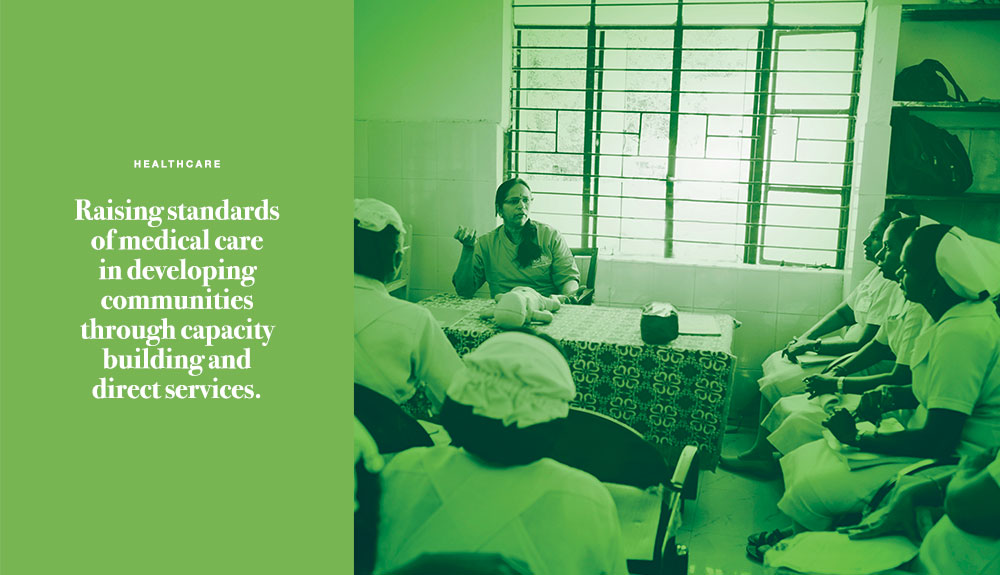
When Pillay Krishnan took a year off in 1996 to teach English in Nepal, he never thought he would sow the seeds for kindness some 20 years later. Some of his students from the Saraswati School in Gorkha District have now become teachers at that same school. They are continuing his work of learning across borders by collaborating with Singaporean students, improving education facilities and processes there.
In Nepal, Krishnan had found a confidant and an inspiring father figure in the then school headmaster, Netra Mani Kattel. Now 51 and a primary school vice-principal on study leave pursuing his master’s degree at the National Institute of Education, Krishnan recalls: “I wanted to set up a library in the school but there weren’t enough resources. Mr Kattel gave up his principal’s office and told me, ‘Those books you brought from Singapore and have been showing the students can go to this library. Your dream has come true’.”
Kattel shares the sentiment. He says: “Singaporeans are down-to-earth, respectful, compassionate and able to adapt to any situation. The help and support that Krishnan has given me and my community, especially during the 2015 earthquake, makes me feel I have a son in Singapore. His passion has inspired me to do more for my own community.”
Krishnan was first inspired to volunteer after watching a TV show on Singapore International Foundation volunteers overseas. He was then 30 years old and teaching at Bowen Secondary. His time in Nepal was eye-opening. “The Saraswati School comprised wooden structures with a zinc roof held down by bricks and stones. On my first day, the headmaster told the students to leave as a hailstorm was expected. Luckily, it didn’t come and classes resumed.”
A new building was completed within his first six months there, but there was not enough furniture. When Krishnan’s students in Singapore learnt about this through a pen-pal programme that he had initiated, they raised money for benches and desks.
He adds: “When the Nepalese villagers heard about Singaporeans giving, they felt that they too should do something for their own community. So they collected wood to construct the furniture.”
Krishnan returned to Nepal in 1999 with 20 of his Raffles Institution (RI) students on an exchange programme. The boys spent two weeks in Gorkha, painting the Saraswati School, sprucing up its library and setting up a garden.
The inspiring collaborations between Singapore and Nepal have contributed to the improvements at the school, which now serves about 900 children.
Paying it forward
One of those teenage boys, Kumaran Rasappan, later became a doctor and returned in 2012 to scale Everest and raise money for the school. The S$10,000 raised went towards computers and books. He also invited Krishnan to return to the school with him. That trip triggered a chain reaction. In 2013, another group of RI boys went to Nepal to set up a science lab and develop a science curriculum at the school.
In 2015, after the Nepal earthquake, Dr Kumaran and his wife returned to give humanitarian aid. The S$40,000 they raised went towards zinc roofs for 105 families in two villages in Gorkha, and repairing facilities at the Saraswati School.The couple and six medical undergraduates later went back in December to hold health screenings and hygiene workshops, provide medical supplies and share skills with local clinical staff. Krishnan, his wife and daughter joined them.
Over the past 16 years, Krishnan has seen the Saraswati School go through impressive changes and experienced his students’ blossoming spirit of giving and receiving. Says Krishnan of Dr Kumaran: “He has become a bigger volunteer than I ever was and a role model for many young people. I’m blessed to see the growth of these new volunteers, their aspirations for a better world and how they’re creating new opportunities for other volunteers to continue our Nepal story.”
After my 1996 stint, I thought the story had ended. I never expected a ripple effect. It has reinforced my belief that we can make a difference. But we must be humble and accept that it takes a big village to make dreams happen.”

